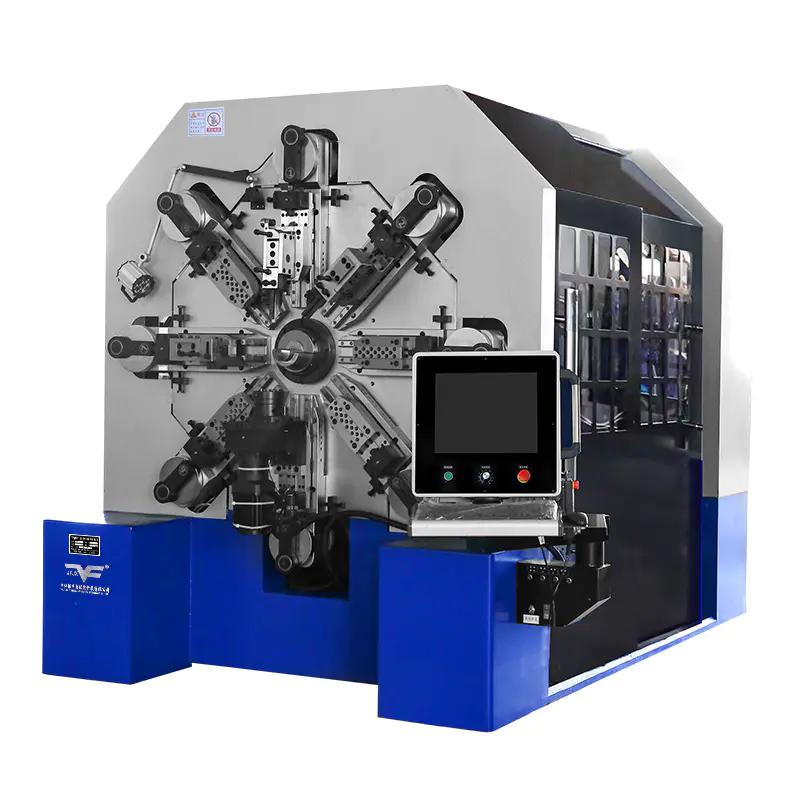Spring Forming Machines: A Key Component in Modern Manufacturing

In today’s fast-paced manufacturing environment, precision and efficiency are critical. One of the essential tools in achieving these goals is the Spring Forming Machine. These machines are fundamental in the production of various types of springs used across industries such as automotive, electronics, appliances, and more.
Understanding Spring Forming Machines
Spring forming machines are versatile pieces of equipment used to shape and form metal wire into various spring configurations. They come in two primary types: camless and cam-operated systems. Each type has its unique advantages depending on the specific needs of the manufacturing process.
Camless Spring Forming Machines
One of the more advanced types is the camless wire spring forming machine. These machines do not rely on traditional cam mechanisms. Instead, they use multiple servo motors to control each station independently, ensuring precise and repeatable spring production. The absence of cams reduces wear and tear, resulting in lower maintenance costs and improved operational reliability.
The camless spring forming machines are also highly adaptable, capable of handling a wide range of wire diameters—from 0.2mm to 10.0mm—making them suitable for diverse spring types and sizes. They are particularly beneficial for manufacturers who need to produce complex springs with intricate designs. The machine's design also includes a detachable crimping function, which accelerates corner processing and arc bending, significantly enhancing overall production efficiency.
Cam CNC Spring Forming Machines
On the other hand, Cam CNC Spring Forming Machines combine the reliability of traditional cam systems with the advanced capabilities of CNC technology. These machines are specifically designed for wire diameters between 0.2mm and 6.0mm. While the basic principles remain similar to cam systems, the addition of CNC technology brings greater precision and flexibility.
The inclusion of features like wire-turning and curling functionalities ensures that even complicated spring designs can be efficiently manufactured. Moreover, these machines incorporate an advanced wire transfer system that allows for 360-degree rotation of the wire feed, which is essential for complex spring formations. These features simplify the production of high-quality springs for various applications.
Applications of Spring Forming Machines
The versatility of spring forming machines extends across multiple industries. In electronics, they are used to produce small, precise springs for circuit boards and other components. In the automotive industry, they play a key role in producing durable springs for suspension systems, locks, and various engine components. Additionally, they are crucial in the production of everyday household products, from appliances to toys.
Thanks to their advanced features and adaptability, spring forming machines are capable of meeting the specific demands of diverse industries. This flexibility is especially important for companies that require high precision and reliability in their spring production processes.
Customization and Support
Manufacturers often face unique production challenges that require specific machine configurations. The ability to customize spring forming machines is a key advantage. Whether it’s adjusting operational parameters or integrating specialized features, many machine suppliers offer a range of customization options to ensure that the equipment meets the exact needs of a given application.
Beyond customization, ongoing support is critical. A reliable manufacturer should offer comprehensive support and maintenance services to ensure the smooth operation of these machines throughout their lifecycle.
- Art
- Causes
- Crafts
- Dance
- Drinks
- Film
- Fitness
- Food
- Games
- Gardening
- Health
- Home
- Literature
- Music
- Networking
- Other
- Party
- Religion
- Shopping
- Sports
- Theater
- Wellness


